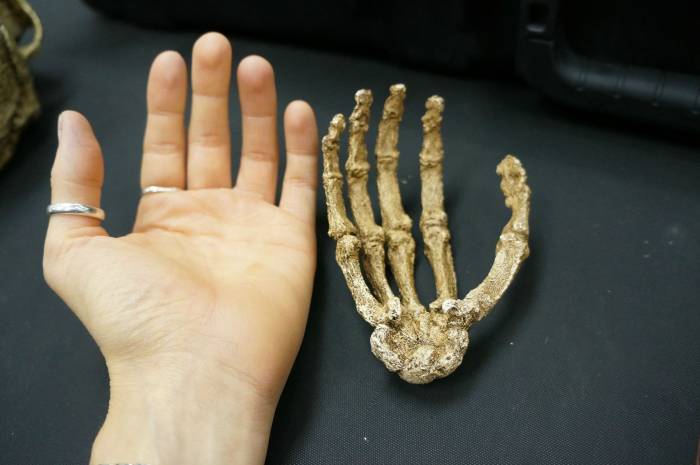
source
A surprising discovery may change everything we thought we knew about human history and development. In September 2013, the largest fossil discovery of early humans in Africa was made in a South African cave. Archaeologists found fossil fragments of a relative of the human species, including bones and teeth that were buried in ancient clay. After two years of analysis by over 50 different experts, it was discovered that the remains belong to a new species of human kin. Scientists have dubbed the new species Homo naledi.
They hit the jackpot of fossils
Initially thought to be one skeleton, it was soon found that the fossils were of at least fifteen different individuals, comprised of men, women, children and infants. American paleoanthropologist Lee Berger, a researcher in human evolution at the University of the Witwatersrand in Johannesburg, says that “With every bone in the body represented multiple times, it is already practically the best-known fossil member of our lineage.”

{adinserter CNP5}
They found something particularly interesting
The specific dates of the fossils are not yet known, but the scientists believe they are one of the most primitive members of the human species discovered so far. And this is surprising given that several bodies were deliberately buried in the same area – this suggests ritualists burying. “It’s enormously surprising to see a very primitive member of the genus, not very humanlike overall, to do something unique to humans,” Berger said. “To see it in a small-brained hominid is completely surprising. None of us expected it.”

An extremely unique being
Homo naledi is different than other early humans in many ways. It is an odd mixture of both primitive and modern traits. It has a small brain, primitive shoulders and torso, and long and curved fingers. These characteristics suggest that they were very early on human evolution, since these types of fingers were designed to climb and swing from trees. Yet the bones in the wrists suggest that they used tools and the bones of its legs and feet show that it was able to walk upright like a modern human. “One of the most exciting things for us is we discovered something new in biology. We had never seen a creature like this before,” said John Hawks, an anthropologist at the University of Wisconsin at Madison and the lead scientist in the analysis, which included experts in primitive feet, teeth, hands and skulls. “Homo naledi is unlike anything in our genus. . . . When you look at the anatomical elements across the body, it’s an enormous assemblage of fossils. The task was to interpret these fossils and put them in the context of evolution and where they fit on the human tree.”

SEE ALSO: An Archaeologist May Have Found Queen Nefertiti’s Tomb.







